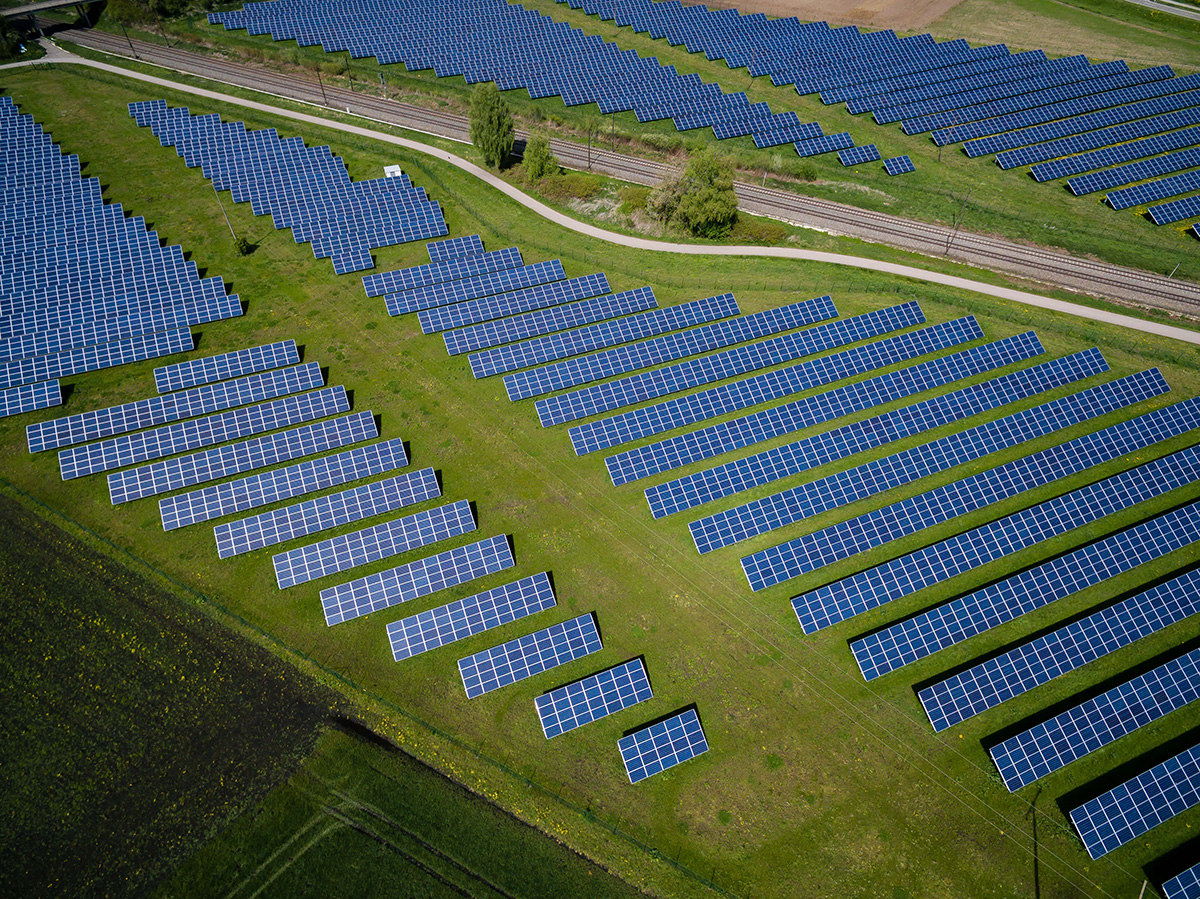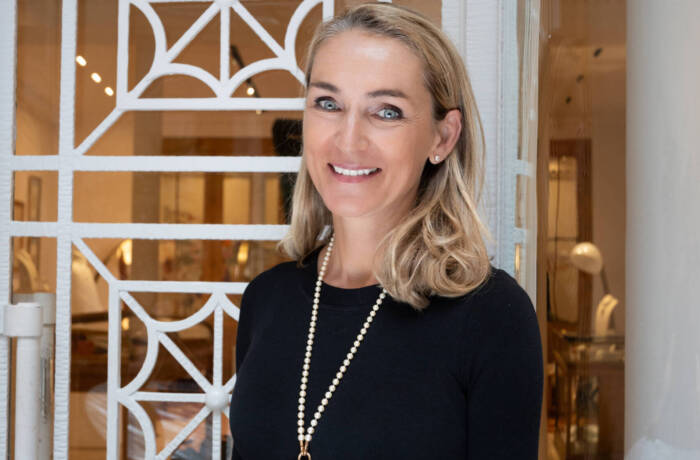
Heather Clancy and Sanda Ojiambo, CEO and Executive Director, United Nations Global Compact © GreenBiz Group/Louis Bryant III
Is there a one size fits all when it comes to corporate climate action? No matter how big a business is, says Heather Clancy, one thing is for certain: inaction is no longer an option. Clancy is Vice President and Editorial Director of GreenBiz, the media company working to accelerate the just transition to a clean economy. She tells LUX why companies need to work harder to embed environmental justice into their corporate sustainability strategy, and explains how climate fintech may just be key to the green transition

Heather Clancy ©GreenBiz Group/Louis Bryant III
LUX: Is there a one size fits all when it comes to corporate climate action?
Heather Clancy: The way a company prioritises is very focused on their individual business. The supply chain of one company could be totally different to that of another. US tech companies, for example, have done a lot on renewable energy, but should be doing more on how they treat and engage with their employees on various issues. Each company must look at what they touch and then make the decisions about which levers to push and pull most directly. The one thing they must do, however, is act. They can’t sit around anymore, no matter how big or small they are.
LUX: How should companies be balancing the ‘E’ and ‘S’ of ESG?
Heather Clancy: Corporations are not spending enough time thinking about how environmental justice is embedded into their corporate sustainability strategies. The pandemic has prompted a lot of soul-searching when it comes to where companies are doing business, but there is still a huge disconnect between the company’s corporate perceptions of what environmental justice means and how they act as a business. There is so much attention being put into making sure workforces reflect the diversity of the community –which is great – but companies need to get a lot more thoughtful about how they engage with the individuals and communities with whom they engage.
For example, one of the biggest blockers to the clean energy transition right now is the supply of materials like lithium, cobalt, and nickel. The necessity of these materials – which are used for wind turbines, electric vehicles, and batteries – has prompted a large increase in mining activities around the world, but there has not been enough attention paid to where that land is. A lot of it sits on indigenous territories, and these communities are not being consulted or involved in the plans, or economically compensated if that’s what is required.
Now that we have this supply chain rethink happening, it would be incumbent upon corporations to look closely at where they’re siting their new manufacturing city facilities if they’re going to move them. This means actually including communities in those plans –helping them understand what the plan is and asking them what makes sense.

Accountability of corporations is crucial for the green transition. Image courtesy of Andreas Gucklhorn
LUX: Are there enough measurable standards for corporations to be measured by?
Heather Clancy: If you ask them, there are too many standards! What is missing is a push for accountability, especially in the United States. The markets are motivated by these earnings reports that we get on a quarterly basis, but there is no equivalent for ESG measures. I do believe that this will be changing, though. Probably the most important prompter for this has been the Taskforce on Climate-Related Financial Disclosures (TCFD), whose recommendations made a tipping point happen as far as how companies talk about what they’re doing and how they are being held accountable for that. But now things are in place, we need to get some agreement and coalescence around certain of these things.
LUX: What role can early-stage climate tech play in decarbonisation?
Heather Clancy: Small, innovative companies have a real opportunity to innovate and become the new suppliers for larger companies – for example by producing alternative materials like mushroom-based packaging to replace plastic or Styrofoam. It is not coincidental that there are so many corporate venture funds now focused on climate technologies, because these corporations are going to benefit from that innovation when the company goes public down the line.
Follow LUX on Instagram: luxthemagazine
A great example is the Amazon-Rivian relationship. Rivian was a vaguely unknown electric van maker, which got a hundred-thousand-unit order from Amazon and has now gone on to become public. There is a lot of shakiness in the market right now with some of these suppliers, but that’s fundamental to business. It’s mainly a great innovation opportunity.
LUX: Do you think it’s correct to talk about de-carbonisation and opportunities in climate tech as being ‘opportunities’, or are they still challenges?
Heather Clancy: Look at Allbirds. They had some shakiness with their ESG IPO, but their entire company was created with the idea of using materials in a different way. One of the biggest problems with athletic shoes is the soles, so they worked to create a new type of sole with a new material which has a lower carbon footprint than other sneaker soles. Instead of choosing to make that sole their own proprietary invention, they opened the technology up to other organisations and helped other companies to start using it. As other companies start to use this technology, the costs will come down and it will be cheaper for them to use it as well. That is a company whose entire business model is framed around this.

Heather Clancy and Hana Kajimura, Head of Sustainability, Allbirds © GreenBiz Group/Louis Bryant III
LUX: What else is exciting you in the climate tech sector at the moment?
Heather Clancy: I am particularly interested in nature-based carbon capture and sequestration technologies. There is an organisation called Project Vesta that’s using nature-based approaches in this way. There’s a big debate about whether we should be investing in those things, because it takes money away from these newer areas, but I think we need to remove the carbon that’s there.
LUX: What role can fintech play in the green transition?
Heather Clancy: The digitisation of sustainability is really important, because it’s becoming part of the financial infrastructure of the companies themselves. Software innovations help companies better understand their climate risks, have a truer accounting of the carbon footprint of their supply chain operations, and to understand whether their carbon offset has the value they think it has. These tools also help people make investments in the other climate technologies.
LUX: What is the biggest barrier to scaling climate tech?
Heather Clancy: Politics. Climate is such a partisan issue in many areas of the world. It has become so easy for one side to weaponise the community and say, ‘look at these renewable energy advocates, they’re making your energy costs go up’. That’s been very damaging in terms of the whole concept.
Beyond that, though, is policy. If there’s one thing that we really are lacking from corporations, it is the voice and end policy support. There are so many policies in place that need to be changed, but there is not enough happening at the federal, state or local levels to help put the policies in place that will make this transition happen more quickly.

Heather Clancy explains the battle for companies desiring to create and bring in new greener technologies but not wanted to create waste by dumping the old materials. Image courtesy of Nick Fewings
LUX: Should we prioritise de-carbonising existing infrastructure or starting from scratch with new green technologies?
Heather Clancy: I’ve been thinking a lot about net zero buildings and how difficult it is to go in and retrofit a building to become a better performing building. There are incentives that exist which make it much easier to knock the thing down and to build a new one. That’s just a huge waste: why aren’t we reusing those materials? But the policies and the laws make it harder to do it any other way.
The other problem with giving credit for renewal projects is that it caters to the people that have money already. If you are a small organisation and don’t have the revenue, you can’t actually take advantage of some of these incentives currently because you can’t afford to invest in them. This is true of the way some of the clean energy incentives are written in the United States. That doesn’t make economic sense.
Read more: Product designer Tord Boontje on sustainable materials
LUX: Are corporations, consumers, or legislation responsible for leading the green transition?
Heather Clancy: Extended producer responsibilities is the buzzword here. It’s important that corporations be more responsible, and they have to be using their voices as well.
LUX: What should the wealthy be doing?
Heather Clancy: They should model better behaviour, and they also need to put their money where it counts. What Bill Gates with his Breakthrough Energy coalition is extraordinary, and seems to me to be an important model. Likewise, Mackenzie Scott and Laurene Powell Jobs have put money in some extraordinarily unusual places by investing in historically black colleges and communities that don’t usually get the money. They’re doing it quietly, and they’re putting their money to work.
It’s also time for the wealthy to help small businesses get on the bandwagon in terms of ESG – to help them with energy efficiency, with their waste and manufacturing processes. Buying from these companies will enable them to make the shift to greener practices.
Find out more: greenbiz.com








